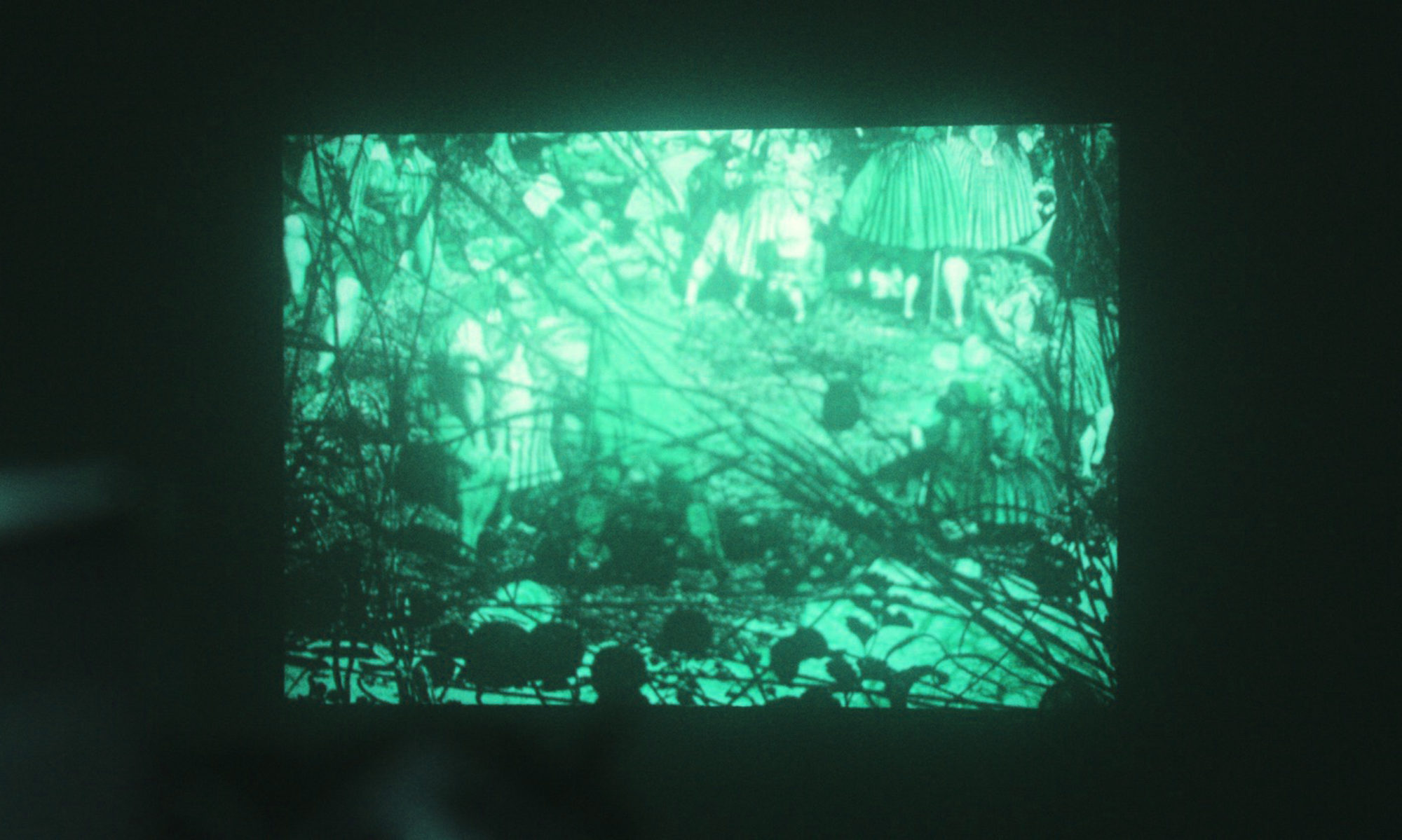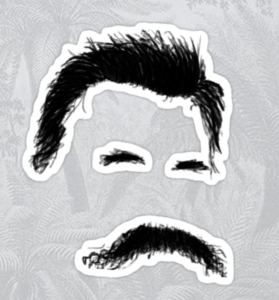Over these last few weeks we have tended to launch either from our fictions or from the Hayden White. Which is to say, in a basic way, the structure of these seminars has tended to be either a trajectory from poetics to history/philosophy-of-history, or the trajectory from history/philosophy-of-history to poetics. This has been explicit in the conversations Jeff and I have been having as we prepare for our meetings. Sometimes we’ve said, “let’s begin with the Hayden White, and then talk about the Stendhal after the break,” or we’ve said, “this week, let’s dive in with the Keene, and find our way to the White through the questions that come up talking about the fiction.”
This week we tried something altogether different from either of these moves. We agreed that today we would launch from the punctum exercises that everybody has been working on. The logic there was that, speaking from my own experience, these exercises take up a fair bit of my time and course-thinking every week (I very definitely find myself reading our “master thinker” of the week with a peculiarly pragmatic set of questions on my mind — how am I going to do this), and yet we haven’t really hit on a formal, or even informal, structure for sharing/discussing them. So now, as we crest to the midterm, it felt right to put them in the middle of the table and see what’s going on.
I thought the result was really satisfying. Ishmael actually spoke up at the end of our session today, and said as much — namely that he had found it both interesting and congenial to dig in on the Nietzsche (and on Hayden White’s reading of Nietzsche) via the workshop-style emphasis on everybody’s individual punctum exercise writings. My feelings exactly.
So what happened?
Well, we heard from just about everyone, and we got to hear both some wonderful bits of writing (I still have Lisa’s lovely Nietzschean set-piece at the foot of Vesuvius very much before my mind’s eye; Jeewon’s image of the “spirit of progress” peering paradoxically over the horizon through a spyglass has similarly stuck with me), and we also got to hear some super interesting reflections on the insights/puzzles/ambitions that hedged your efforts (I think immediately of Jackie’s wonderful story of pursuing some kind of archaicizing parable-form of her punctum, only to end up in a remarkable and serendipitous meander across the archives of her moment; and then there was Ishmael’s admittedly as yet unborn vision of creating a genuine foundational MYTHOS for the political identity of the peoples of Northern Africa).
And there was much more: Jeremy caught some bright spark of rage-glory as he ventriloquized Nietzsche’s hypothetical dismissal of Descartes; Greg worked some of his own central questions (architecture, exhibition, technology) through Nietzsche’s analytics of the monumental and the antiquarian and the critical modes of history writing. Finally, you all were very gracious in permitting me to dilate upon my own swipe at the task, which I append here:
(Once again nudging: do feel free to share these pieces either via the website or through blackboard, or via email — anyway you like, and only if you wish…)
Reading this material around, we actually dug in pretty deep on the question of Nietzsche‘s “historical consciousness.” You all had a chance see Jeff and I gently emphasize complementary (I think), but not homologous accounts of Nietzsche’s orientation to the historical. I really tried to dramatize the late and visionary ambition genuinely to leave the condition of the human behind. In this sense, I take Nietzsche to be obliged to gesture toward a form of “historical consciousness” that we cannot (given that we are human) discern or comprehend. My own think piece, while legible as a satire, is very definitely intended to take that proposition absolutely seriously. The truth is, I am actually quite sympathetic.
Jeff, as I heard him, wanted to insist on just how completely entangled with history (its modes, its forms, its tools) Nietzsche’s apparent desire to transcend history actually turns out to be. This is very definitely the case, and I would not dispute it. The question that hung a little in the air, for me anyway, was whether Jeff was willing to follow me as I gesture to a Nietzsche who was gesturing past any form of historical consciousness that we could recognize as such. By disposition, I think, I am the more “hysterical” thinker in our teaching duo, and in that sense our respective accounts of Nietzsche can be seen to have played to type.
About here in the discussion another very large and difficult question arose and, as I saw it, did not really “land.” I am referring here to the question of “style” in Nietzsche’s work: I adopted a somewhat flat-footed posture (insisting that, while I certainly have some feel for Nietzsche’s characteristic style, I nevertheless am possessed by a distinct sense that I “understand” his “arguments” and would be perfectly happy to see them rearticulated in some other style — indeed, I went so far as to suggest that Hayden White’s chapter on Nietzsche served as an example of what Nietzsche’s arguments look like when written by someone who doesn’t sound like Nietzsche at all); Jeff’s position was, I think, more subtle (I will leave it to him to gloss his view on this matter if he chooses).
*
Gloss. The word puts us in mind of John Keene’s story “Gloss, or the Strange History of Our Lady of Sorrows.”
*
After the break we settled in to a conversation about Counternarratives. It was a good conversation. Not easy. The final story, “The Lions” is brutal, and troubling. We sat with it, and with what it implied about the structure of the book as a whole.
If there was an insight that came out of the conversation that sticks with me, it would be the realization of the way so many of the stories are “dead ends” or are “cut off.” Greg showed us the way several of the formal gestures (the peculiar typography that begins and ends “Acrobatique”) instantiated this theme, which was manifest in narrative content elsewhere (e.g., the end of “The Aeronauts”). This sense of things being disrupted, clipped, even amputated finds its most dramatic and haunting expression in the mutilations of the final story of the volume. But we noticed that the text powerfully foreshadows that conclusion in the striking “news item” overture of the decapitated young man from which “On Brazil, or Dénouement: The Londônias-Figueiras” departs (and to which, one might argue, it returns — if in a ghostly/uncanny way).
Ultimately, the highest stakes in this closing conversation lay in the question of whether Keene’s book can be read as gesturing toward, or, indeed, seeking to generate, some new form of historical consciousness. And here, it was very tempting to invoke Nietzsche’s notion of the “superhistorical” after all, we are abundantly aware (or we should be) of the extent to which “proper historians” and “proper history” have been incapable — are, it would seem — incapable of “doing justice” to the people and peoples and stories with which Keene is concerned. Sure, we card-carrying academic historians have tried. We have tried to “recover the voices” of those who are, in one way or another, “lost” to “history.” Yes, we have developped different techniques to get at lives and experiences not well represented in the archives. But the reality is, it will always be easier to write “histories” of slave holders than it will be to write the “histories” of slaves — and that is not an accident. That is 100% baked-in to the structures of power that make slavery and make history (as we know it). And when you look at it that way, it might be time for some superhistoricism — it may be past time.
And it is, in my view, not impossible that this is what we are holding and reading and discussing in these last two weeks with Counternarratives.
Lots to think about.
Onward!

